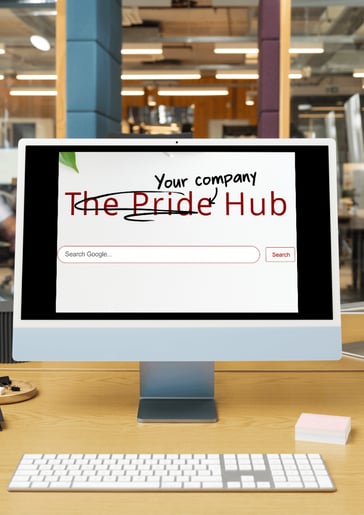For teams that move fast, even the intranet should stay out of the way.
LionsPride Assistant—a virtual executive support firm delivering expert administrative and operations support for high-profile leaders and entrepreneurs—recently asked for help streamlining internal operations. One of the key initiatives? Designing a Google Site to serve as a centralized team homepage for SOPs, updates, and critical resources.
Executive Support. Elevated.
At LionsPride Assistant, we deliver expert executive and operations support for high-profile leaders and entrepreneurs. Our team drives the day-to-day operations so you can stay focused on leading and growing.
So that’s exactly what we built—an internal intranet designed to evolve with the team’s needs and scale communication as they grow. To make it frictionless, we set the Google Site as the default homepage via the Google Admin portal. That way, anytime a team member opened a browser, all they had to do was be logged in to their LPA Google account.
But there was one crucial missing piece—Google Search.
By default, Google Sites doesn’t include a built-in way to embed a Google Search bar. So while the homepage was front and center, users would still need to leave the page to search the web like they normally would. That extra step—however small—creates friction.
If your team relies on Google constantly, forcing them to bounce away from the homepage just to run a search kills momentum. The intranet needed to feel like a launchpad, not a dead end.
The Agile Fix: A Lightweight, Branded Google Search Bar
We solved this by embedding a clean, branded HTML form into their Google Site that behaves like a Google Search box using Google Site's own "<embed>" feature. No API keys, no plugins, just native functionality with a quick redirect to the search results.
Here’s the core code we dropped in (with LionsPride’s brand red applied):
Form breakdown:
Redirects queries directly to Google
Opens in a new tab
Styled to match their visual identity
Mobile responsive with
max-widthand padding controls
Example HTML (for dev teams):
<form method="get" action="https://www.google.com/search" target="_blank" style="text-align: center; margin-top: 50px;">
<input
type="text"
name="q"
placeholder="Search Google..."
style="width: 90%; max-width: 500px; padding: 12px 20px; font-size: 16px; border: 1px solid #bf1e2e; border-radius: 24px; outline: none; color: #bf1e2e;">
<input
type="submit"
value="Search"
style="margin-left: 10px; padding: 10px 20px; font-size: 14px; border: 1px solid #bf1e2e; border-radius: 4px; background-color: #f8f9fa; cursor: pointer; color: #bf1e2e;">
</form>Why It Works for Agile Teams
-
Reduces clicks – Team members don’t need to open a new tab to search Google.
-
Centralizes access – Keeps everything from SOPs to global search in one place.
-
Saves time – Especially for remote or virtual teams who rely on search as part of client work.
It’s a 5-minute upgrade that removes a 5-second friction—multiplied by every person, every day.
What Each Line Does (Simplified)
| Code Element | Purpose |
|---|---|
<form method="get" action="https://www.google.com/search"> |
Tells the form where to send the query (Google). |
name="q" |
This is the name of the field Google uses for search input. |
target="_blank" |
Opens results in a new tab (doesn’t interrupt the internal homepage). |
style="..." |
Customizes layout, padding, borders, and colors. |
placeholder="Search Google..." |
Shows prompt text before the user types. |
type="submit" |
Triggers the search redirect when the user presses enter or clicks. |

Limitations to Be Aware Of
This is not a live Google widget—no autocomplete, no search suggestions. You won’t be able to track searches unless you layer on Google Tag Manager. Results are not embedded—they open on Google’s site in a new tab. Still, it works like a charm. Especially when your goal is fast, brand-consistent utility inside your team’s primary workspace.
Final Thoughts
The best solutions don’t always require full integrations. Sometimes, a little HTML and a clear intent are all you need.
For LionsPride Assistant, this tiny upgrade made their internal Google Site more functional, more usable, and more aligned with how their team naturally works.
Need help implementing a similar experience inside your team’s Google Workspace, Notion, HubSpot, or ClickUp stack? Let’s talk about simple tools that get real results.
Comments